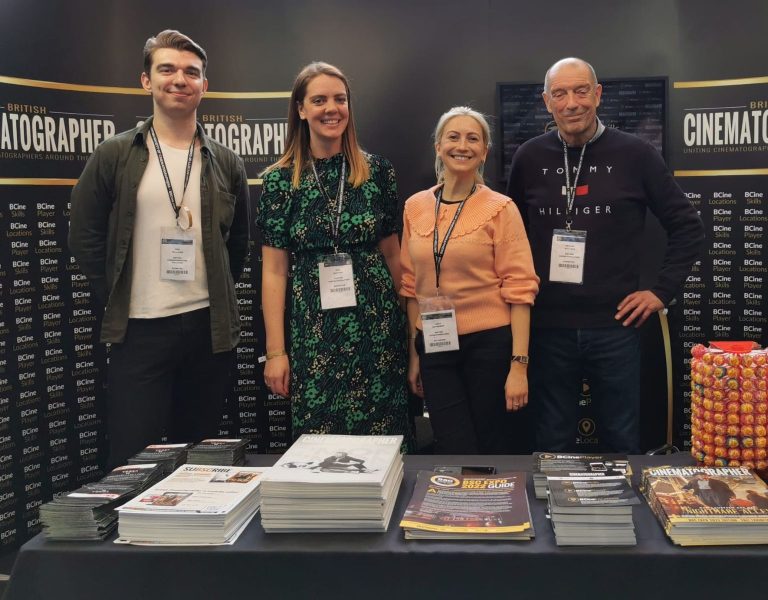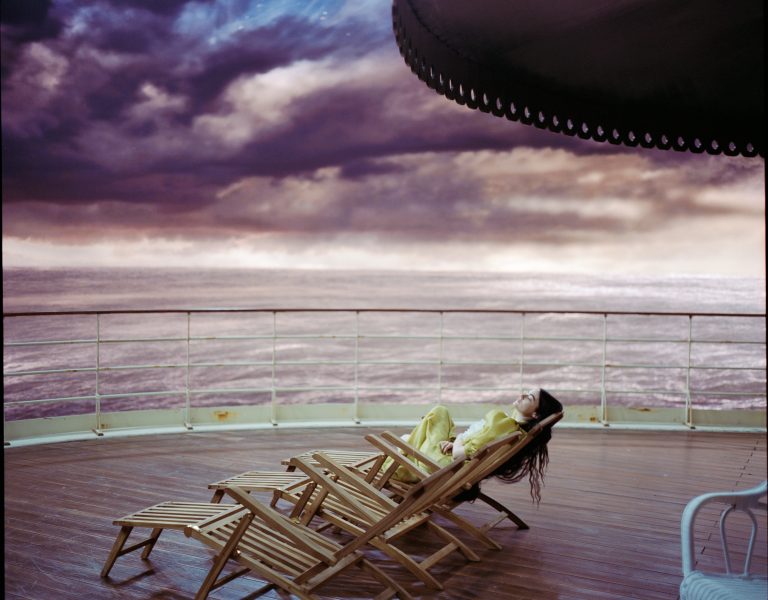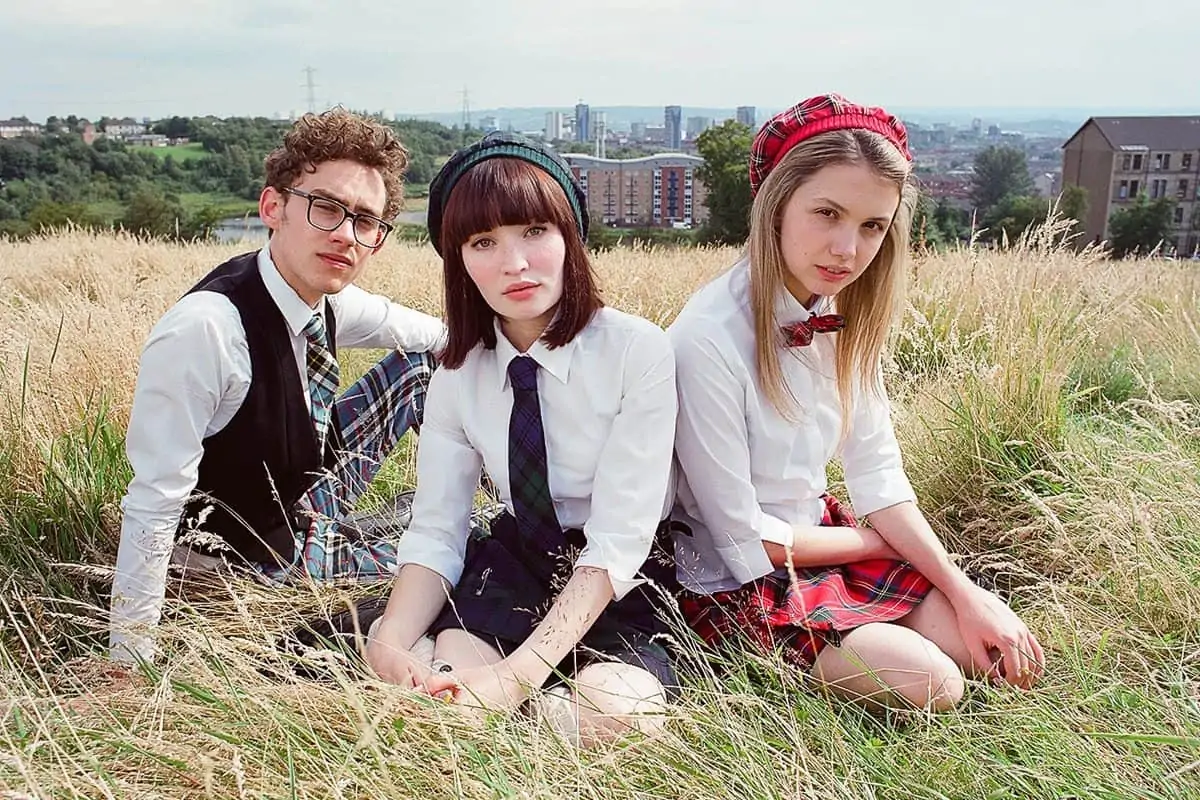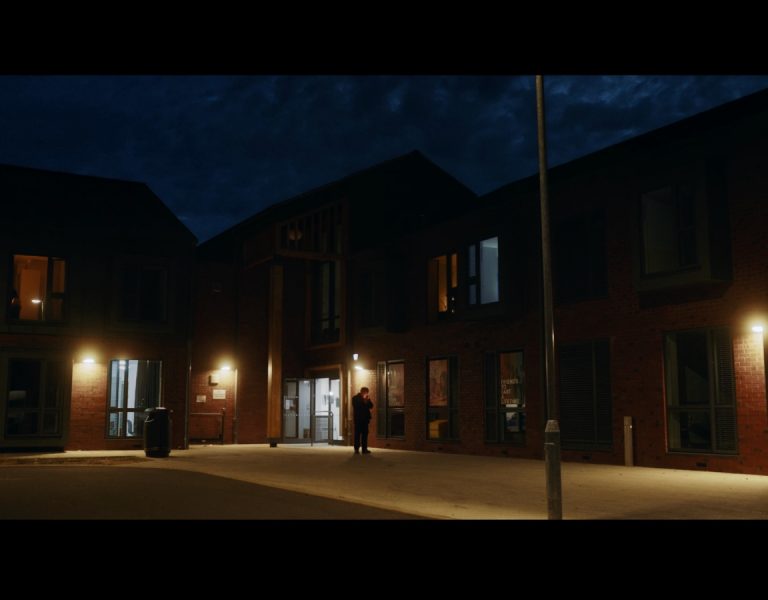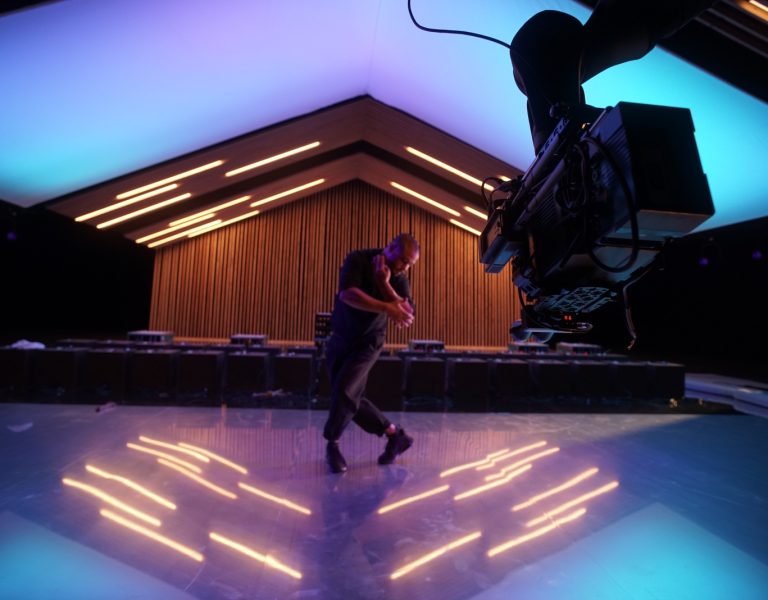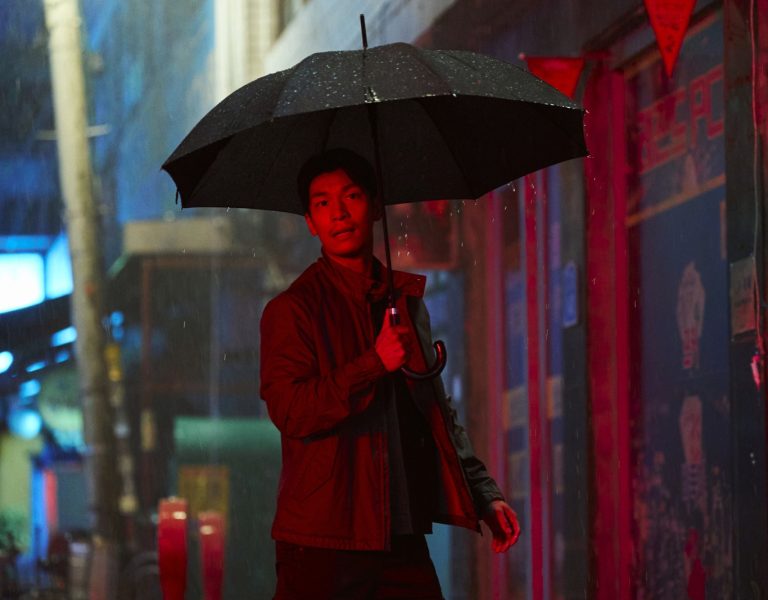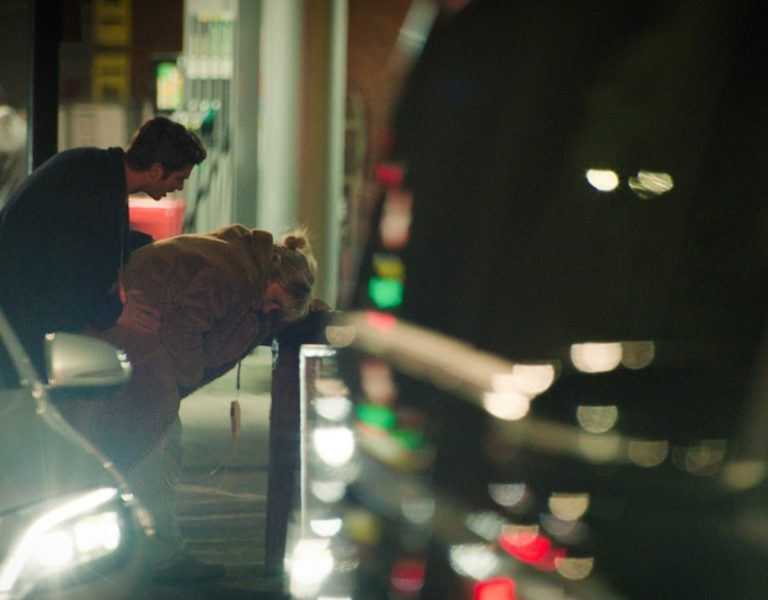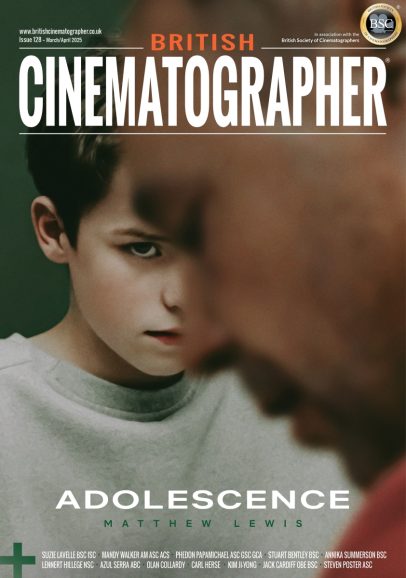Royal rumble
The infamous Newsnight stand-off between Prince Andrew and presenter Emily Maitlis has been given the Netflix treatment in Scoop. Cinematographer Nanu Segal BSC worked closely with director Philip Martin to bring light and shade to this thrilling dramatisation of that interview.
When Newsnight, the esteemed BBC current affairs show, was granted an exclusive interview with Prince Andrew in 2019, few could have predicted the ensuing furore that would shake the very foundations of Buckingham Palace. Emily Maitlis, Newsnight’s indomitable anchor, quizzed the Prince on his relationships with the disgraced financier Jeffrey Epstein and with Virginia Roberts Giuffre, who claims she was paid $15,000 by Epstein to have sex with the royal when she was 17. Then came the memes; an inability to sweat, straightforward shooting weekends, and a certain visit to Pizza Express.

The events leading up to the ill-advised interview and its aftermath were documented by spunky Newsnight producer Sam McAlister, who played a key role in securing Prince Andrew. The ‘story behind the story’, revealed by McAlister in her book Scoops, caught the attention of The Lighthouse Film and Television, and screenwriter Peter Moffat was entrusted with bringing Scoops to the screen with McAlister as a central character.
Director Philip Martin was no stranger to the royal household thanks to his work on The Crown, but Scoop – as the screen adaptation is titled – takes a different direction. “Phillip talked about our film having a propulsive energy,” remarks DP Nanu Segal BSC (Hoard, Emily). “something with pace and a rhythm to it. Michael Mann’s work was a key reference. He wasn’t looking for a polished look, rather something that had a bit more texture to it.”

Segal was drawn to Scoop through the page-turning energy in Moffat’s script, and Phillip’s vision for the film. She found herself especially connected to McAlister’s journey (portrayed by Billie Piper) and was interested in helping to tell her side of the story in securing the big interview. “Although Scoop is set in a world that we’re all familiar with, it still felt really fresh and exciting,” she adds.
For the director and DP, striking the right tonal balance for Scoop was imperative. Segal says: “In the film, we’re touching on some profoundly difficult subjects that have to be treated with respect and delicacy. But at the same time, we wanted to make a film with pace and a touch of lightness, in terms of Sam’s journey.”
Martin notes, “[We tried to] create something that was fast-moving, fun, witty with bite but also had a narrative drive to it – and that wasn’t afraid to deal with the serious issues when they appeared.”

VFX verve
Ongoing script work meant the filmmakers were granted a longer prep than expected, back in winter 2022. Although the final script wasn’t locked, Segal and Martin were able to prep and storyboard some of the film’s set pieces really thoroughly – particularly useful for the more VFX-heavy scenes.
Naturally, shooting beyond the imposing gates of Buckingham Palace was out of the question, so exteriors were shot at Greenwich and on a large green screen exterior set, with elements brought together in post by Milk VFX. Astonishingly, the film’s opening sequences in New York, where the Prince was photographed on a now-infamous stroll in Central Park with Jeffrey Epstein, were actually filmed in London’s Battersea Park. Everything beyond the treeline was VFX, with plates shot by a team in New York.

Segal describes the film’s union of cinematography and VFX as a “tapestry”, pointing out Martin’s desire to keep the visuals as authentic as possible. “Phillip is brilliant at incorporating VFX with the in-camera photography. Our approach was to have what’s near the characters real, as well as having midground elements in-camera, and reserving the deeper background for VFX.”
Others involved in creating that “tapestry” were set designer Stéphane Collonge and art director Byron Broadbent, who both helped Martin achieve his aim of making Scoop’s world feel expansive. “He wanted the world to be expansive and really breathe, which fed into our Michael Mann references,” Segal notes.
These references included The Insider (1999): “You’ll have a really big close-up of Russell Crowe in the foreground, while also feeling the environment behind him, creating a close-up and wide shot at the same time,” the DP continues. “Our ambition was to take a cue from that.”
Segal’s choice of Panavision C-Series anamorphics helped her to build on Martin’s framing decisions. “A lot of the environments in the film – especially the BBC’s studios – are quite brittle, and I felt using vintage glass would offer an interesting photographic approach,” she explains. “Obviously, spaces like Buckingham Palace have an inherent beauty to them, but we felt [using the C-Series lenses] was a way to humanise the more electronic world of the BBC and hopefully make it cinematic.”

Scoop marked Segal’s first time using the ARRI Alexa 35, the perfect companion to the 35mm lenses. She praises the sensor’s scope in the highlights, which was particularly useful when shooting scenes in Prince Andrew’s office. The location was on the second floor and even with black-outs on manitous and lamps on machines, sun control was always going to be a challenge. “But if things got really hot, I knew we’d be able to pull back information in the grade and details wouldn’t be blowing out,” she adds.
Ed Clark ACO was on operating duties for Scoop, whose camera team also included Sally Low, Johnny Garwes, Lily Taylor, Robbie Chapman and Lucas Campain, supported by grip Tom Pittman. Segal recalls: “Ed Clark, Philip and I would always look through the viewfinder in turn to find a shot. Framing with the lens itself, rather than through Artemis, is my favourite way to discuss what the composition should be. Ed’s frames would be always exactly what I had in my head – except better!”

World building
Scoop’s locations range from the bright and clinical BBC offices to the stately opulence of Buckingham Palace. Segal and Martin discussed how to delineate these varied worlds featured in the film while retaining a cohesive look. They engaged Goldcrest Post’s Andrew Daniel (now at The Look) from prep and he created three different LUTs: one for the BBC, one for Buckingham Palace, and another for Sam’s world.
“The BBC LUT is cooler, with blue in the shadows,” Segal explains. “For the Palace, we wanted to lean into the golds and reds with warmer shadows. Then for Sam’s world outside these two spaces, the LUT is more neutral.”
The Palace is the forbidding host of the Newsnight interview and Segal strove for authenticity in her lensing of this sequence, shot over a couple of days. She talked with two of the broadcast camera people who had shot the original interview in 2019. They had used multiple Canon C300s with a burnt-in LUT, so Segal implemented the identical package. Working closely with broadcast DP Paul Kateley who oversaw the broadcast cameras and lighting, they shot with the Alexa 35 and the C300s simultaneously to capture both interview footage and behind-the-scenes shots. The C300 footage was originated at 16×9 but cropped during the edit so there was less of a jump between the material.


“It was interesting because the C300s cameras were art department props, so they had to be placed faithfully to the original interview,” Segal says, “but they were also working to gather footage, because in the final film the C300 footage ended up playing significantly in the interview.”
Segal loved seeing actors Gillian Anderson (playing Maitlis) and Rufus Sewell (Prince Andrew) at work during this sequence. “Gillian and Rufus performed the entire interview in unbroken takes – almost like a theatre piece,” she remembers. “It was exhilarating to watch them.”
“For two days Gillian and I just did it on a loop without any rehearsal,” adds Sewell. “It was like being in this strange, weird, not entirely pleasant bubble for a couple of days where no one would call cut. We just went from start to finish over and over again.”

Shiny-floor lighting
Segal encountered the crossover of cinema and broadcast when shooting scenes set at Newsnight studio (but in reality filmed at BT Sport). Lighting the set was a different challenge to what the DP was used to. “It was interesting because the lighting was what I call ‘shiny-floor lighting’ – TV studio lighting – it was really fun because we had to light it in a way that was true to that environment, even though we’re shooting it for narrative.
“I was quite fortunate because in my lighting team, there were a couple of people – rigging gaffer Stuart Humphrey and main unit gaffer Pete Taylor – who really understood the dynamics of TV studio lighting. I could lean on them to make sure our approach was authetic.”
Lighting the BBC offices where Sam McAlister works as Newsnight producer also involved some innovation. “We built and tested several different options for the in-camera overhead lights during prep,” she recalls. “The lights had to integrate seamlessly with the ceiling and because the location was an actual office, we had to remove the existing units first. With Byron (Broadbent, supervising art director) we built light boxes fitted with Astera tubes. Everything was hardwired back to a desk, so it was easy to adjust the colour temperature, turn certain units on and off and adapt the lighting very quickly to balance with the available light coming in from outside.”


Production designer Stéphane Collonge was also able to work his magic on the omnipresent computer monitors so that it was easy for Segal to adjust their brightness levels to suit.
These fruitful inter-departmental collaborations have surely contributed to Scoop’s streaming success; the feature was watched by 2.75 million viewers in its first seven days. Indeed, for Segal, one of the most enjoyable parts of making Scoop was standing at the monitors with Martin and watching their work come to life. “When I went to the preview screening in London, it was really satisfying to see the things we talked about in prep come to fruition. The finished film had the tone that we planned for, and that’s something I’m really proud of.”
